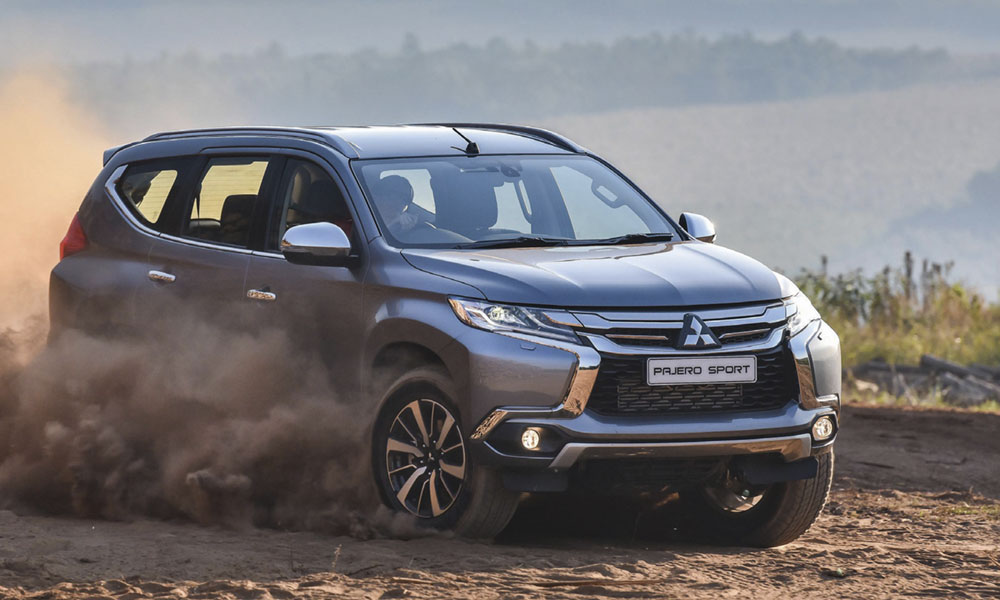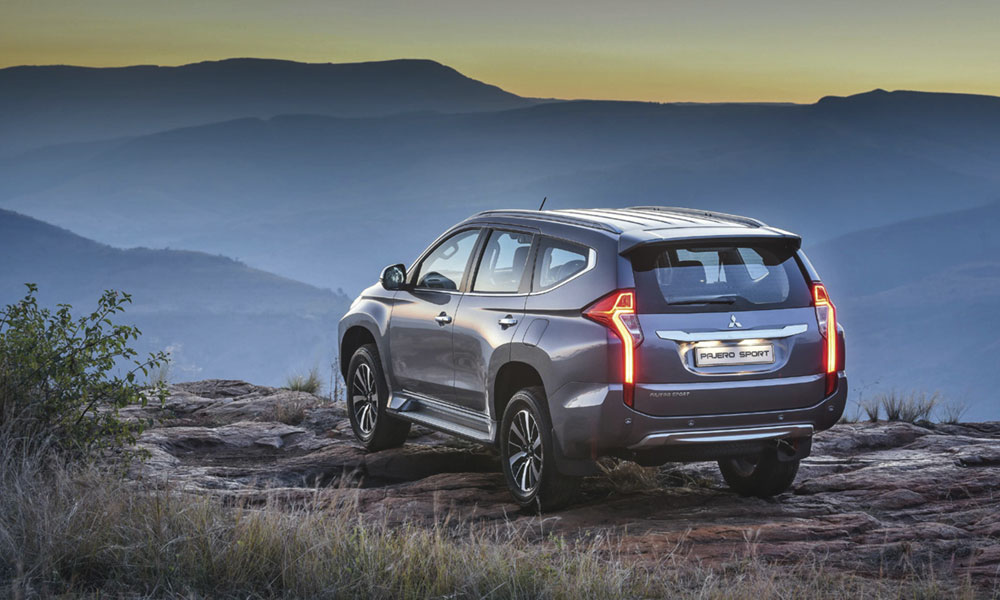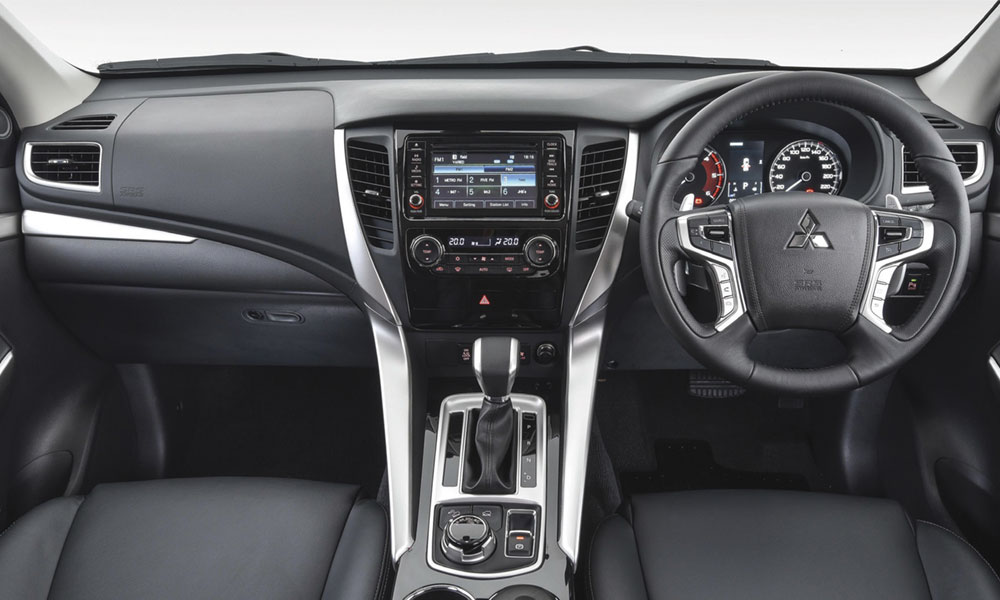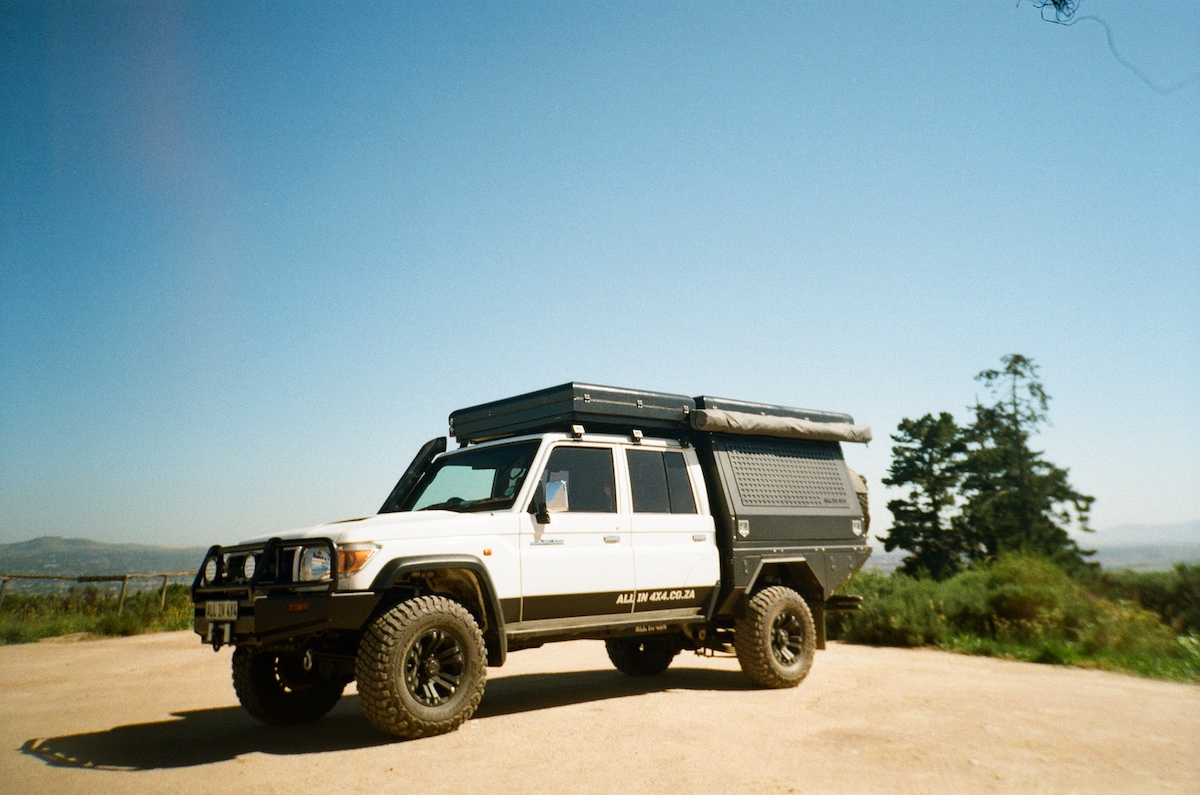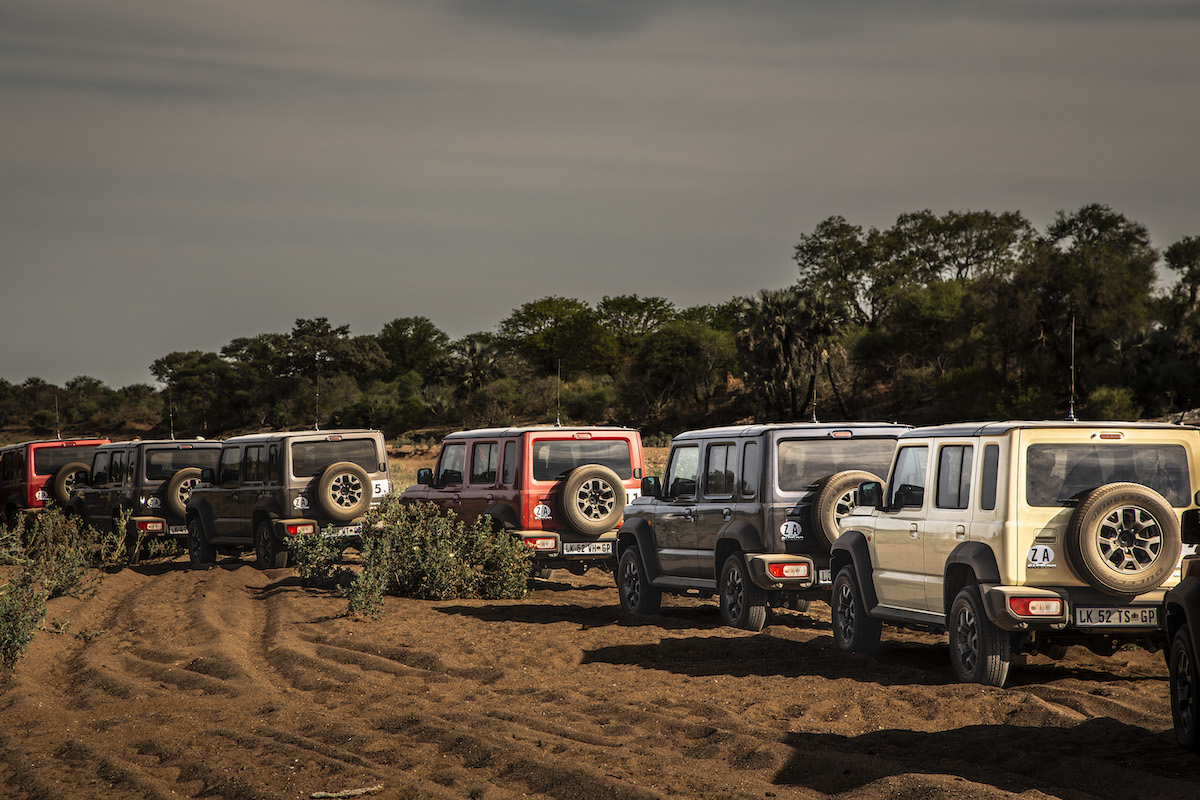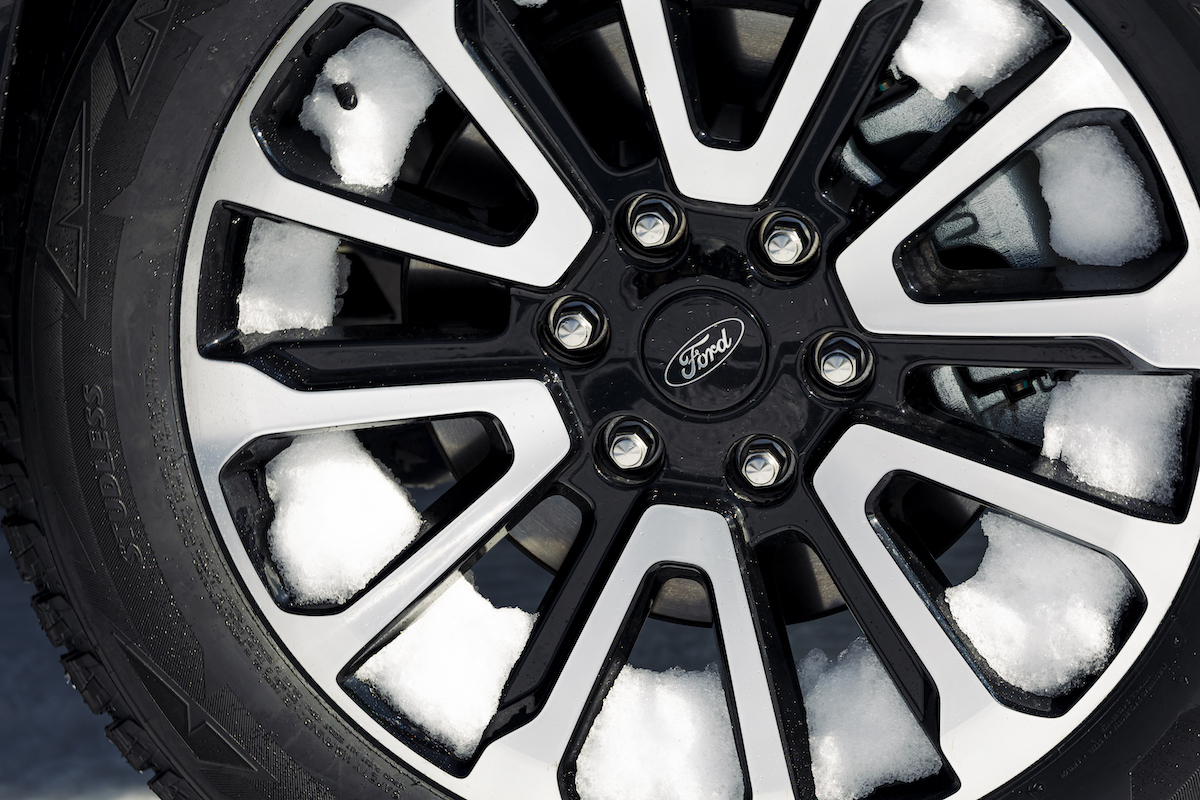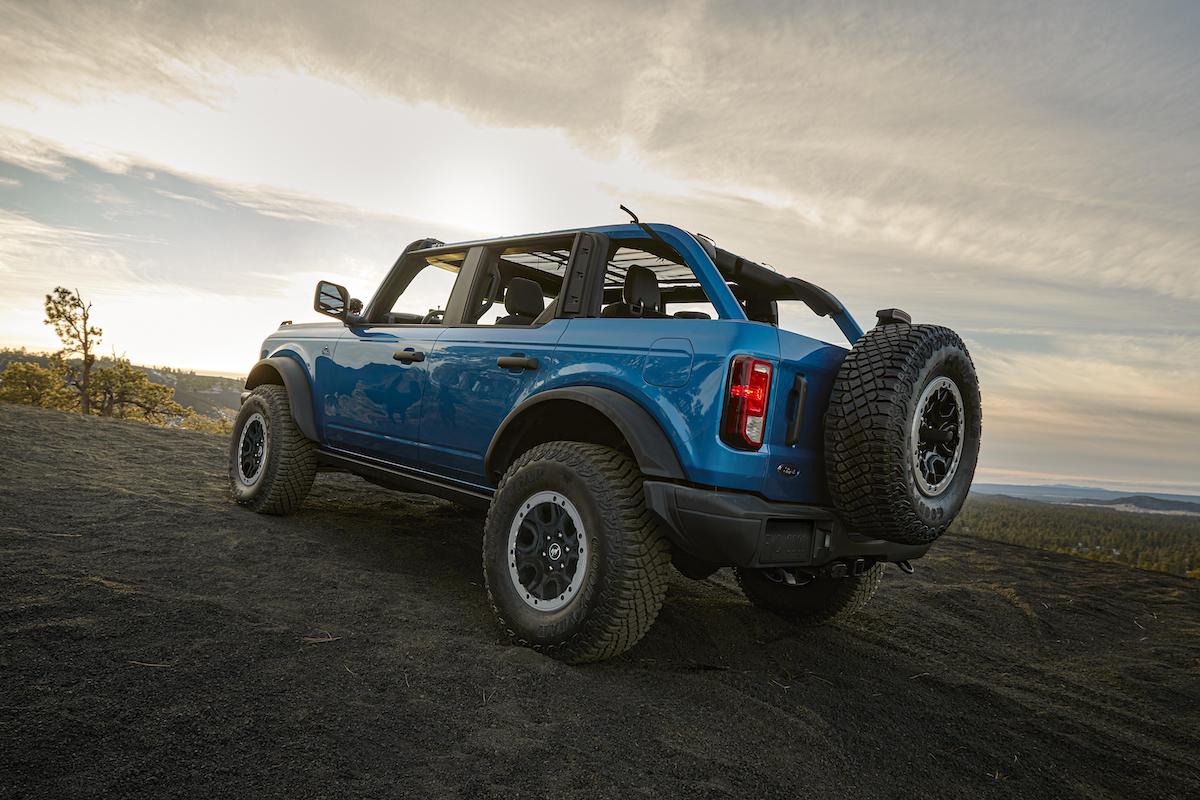The arrival of Mitsubishi’s latest Pajero Sport has long been delayed, mostly thanks to a weakening rand. But now it’s finally here… and if first impressions are anything to go by, this Pajero Sport finally provides Mitsubishi South Africa with a worthy weapon for taking on the class leaders in the SUV-based-on-a-bakkie segment. And even beat them.
The man in the parking lot walked over to us with a smile. “Hey, this is the new one, huh? It’s the new Pajero Sport, right?” he asked, excitedly.
We nodded in agreement. “It sure is,” we replied.
“Hah! I thought so! There’s mine,” he said, pointing to a pristine previous generation Pajero Sport, parked two cars away from the new Pajero Sport. “Bought it brand new in 2010, and it has done 230 000km. Every service done at the dealer. And never a moment’s trouble.”
He was clearly a Mitsubishi fan, as most drivers who have owned a Mitsubishi seem to be. He walked around the new Sport. Stopping at the back, he seemed to ponder something. “You know, I really like the front styling, but this tail… yoh. The tail lights… no man, that doesn’t work for me,” he said.
Curious to find out what he thought about the new cabin, we invited him to have a look. He inspected it, touching here, fiddling there. “I really like the simple, straightforward design. I’m not so mad about the high centre stack, I like a more open design to fit my frame,” said the man, who was over six feet tall, and quite bulky, too.
He headed off, but not before he told us all about how he loves driving his Pajero Sport in the Kalahari, from where he hails.
You may wonder why we start a road test in this vein. Thing is, this gentleman’s passion for this brand is clear and obvious. In recent times though, Mitsubishi South Africa has lacked a halo model to cater for dedicated fans like this. A model that could cause a fistfight on a school playground.
The Pajero is great, but it’s old. The previous generation Pajero Sport was okay, but the 2.5-litre diesel wasn’t great. The new Triton is pretty good, but in the ultra competitive double cab market it is up against the Toyotas and Fords of this world, so it gets lost in a garble of discounted deals.
Now the new Mitsubishi Pajero Sport has the potential to be that halo model. Here’s why.
The look of it
We agree with the Mitsubishi man. The front-end looks just dandy, but you’ll need to add a few beers to the equation to call the tail a thing of beauty. Probably a case of beer, actually.
From the side it also looks pretty fine, with the two-tone 18-inch alloy wheels rounding off the modern, sleek profile. The new Pajero Sport represents a huge leap forward in the design department, compared to the previous generation Sport.
The cabin
Here Mitsubishi’s engineers kept it simple, practical and relatively easy to use. The infotainment system is the same you’ll find in the Pajero, and the system is not the most intuitive in the business. Once you’ve figured it out, it works well enough, but sound reproduction is not quite as good as in some similarly priced SUVs.
There is climate control with controls for rear passengers, full leather for all seven seats
(the second and third rows of seats fold flat), electric adjustment for the driver’s seat, a multi-function leather-covered steering wheel and electric windows all round.
It is all very plush and luxurious, as you’d expect. Quality has also improved over the previous generation Sport.
The ride
Riding on the multi-link rear set-up and double wishbones in front, the ride of the new Pajero Sport represents a bit of a conundrum. It is by far the softest, most comfortable ride in its class, which is great news if you drive on the N1 highway every day. It floats imperiously, and comfortably.
From a dynamic point of view, it is less accomplished, thanks to the softer settings. There’s plenty of body lean in the corners when you push along, and hitting the brakes hard causes the nose to dip quite a bit. It’s not that it handles badly but it obviously prefers to waft along on the open road instead of being chased hard through a mountain pass.
That said, it’s a family-oriented SUV after all, so it is debatable how many drivers will want to race it on a mountain pass. Active stability and traction control (ASTC) and six airbags are standard.
The engine. And that gearbox
This is where it gets really good. In the previous generation Sport, a 2.5-litre turbodiesel (131 kW/350 Nm) and a five-speed automatic gearbox did
not make for good bedfellows. With bags of turbo lag, the four-cylinder engine and the older-generation five-speeder just
didn’t get on.
This has been rectified drastically. The more modern 2.4-litre four-cylinder engine delivers 133kW and 430 Nm, the latter peaking at a seemingly high 2 500r/min. But with the new eight-speed automatic gearbox the delivery is absolutely seamless, with virtually no perceptible turbo lag. The combination offers excellent dynamics, from pottering around town to open-road cruising.
According to Mitsubishi tradition, there are impressive gear paddles mounted behind the steering wheel; the left paddle shifts down, the right one, up. It will probably only be in an off-road environment or in a mountain pass where the manual shifting could possibly be an asset.
Super Super-Select
The Pajero Sport is still a real 4×4. It is equipped with Mitsubishi’s excellent Super Select II 4WD system, which offers the option between 2H, 4H (60:40 split between rear and front axles via a Torsen centre differential), 4HLc (with centre diff locked) and 4LLc (low range with centre diff locked).
There is also a rear differential lock, and now also hill descent control and off-road mode. The latter allows the driver to select between specific electronic settings for gravel, mud/snow, sand and rocks. Ground clearance is pegged at 215mm.
The culmination of all the bells and whistles mentioned above is that the latest Pajero Sport 4WD is really capable when you head off the beaten track. Instead of
going soft on off-road capability in favour of on-road comfort (like many other brands seem to do), the latest Pajero Sport is actually more capable on a 4×4 trail than its predecessor.
Summary
R599 995. That’s how much the Pajero Sport 4WD will set you back. This includes a five-year/90 000km service plan. That’s R33 500 less than Toyota’s Fortuner 2.8GD-6 4×4 AT, and R45 900 less than Ford’s Everest 3.2TDCi XLT 4×4 AT. And in today’s cash-strapped economic environment, that’s a lot of money. So the new Pajero Sport certainly offers good value for money in its segment.
Throw in the brilliant new drive-train, the unique Super Select II system that offers real 4×4 capability, loads of standard kit, the modern looks, the luxurious cabin, the comfortable if slightly floaty ride… no wonder Mitsubishi fans are excited.
Mitsubishi South Africa now has its long-overdue halo model.
MITSUBISHI PAJERO SPORT 2.4D4 MIVEC 4×4 AT
Engine Four-cylinder turbodiesel
Displacement 2 442cc
Power 133kW @ 3 500r/min
Torque 430Nm @ 2 500r/min
Transmission Eight-speed automatic
4WD system Super Select II (2H, 4H, 4HLc and 4LLc)
4WD driving aids Off-road mode, hill descent control, rear differential lock
Ground clearance (claimed) 215mm
Consumption 9.8 litres/100km
Fuel tank capacity 68 litres
Service plan Five-year/90 000km
Service intervals 10 000km
Warranty Three-year/100 000km
Price (standard) R599 995
